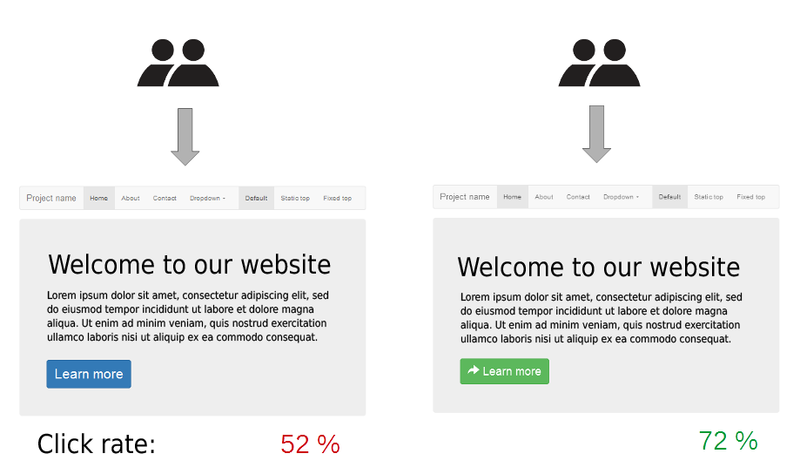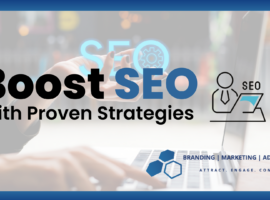Maximizing ROI in Local Online Advertising: What to Do When Your Ad Spend Exceeds $10,000 Per Month
Businesses with growing ad budgets are seeking ways to optimize their local online advertising campaigns. When your ad spend surpasses $10,000 per month, the goal shifts from basic traffic generation to ensuring that each dollar spent provides measurable, valuable returns. Managing large-scale paid advertising campaigns can be complex, but with the right strategies, your investment can drive substantial growth.
This blog will explore key strategies and techniques that will help you maximize ROI and efficiently scale your local advertising campaigns. We’ll focus on proven tactics for optimizing ad performance, smart allocation of budget, and the importance of using data to guide decision-making.
Questions This Blog Will Answer:
- How can businesses scale their local online advertising campaigns effectively when their ad spend exceeds $10,000 per month?
- What strategies maximize ROI as ad spend grows?
- How can businesses ensure their digital marketing strategy is aligned with their overall goals as ad spend increases?
- Which metrics should businesses track when managing paid advertising campaigns at this scale?
- How can businesses leverage advanced targeting techniques to improve the effectiveness of their ads?
Let’s dive into the essential steps for managing large-scale local advertising campaigns.
Local Online Advertising: Scaling to Success
Scaling your local online advertising efforts when your ad spend grows can be overwhelming, but it’s a crucial step toward achieving sustainable growth. At this stage, it’s important to shift from generic advertising methods to more refined strategies that ensure every dollar of your ad spend contributes toward specific business objectives.
1. Audience Segmentation and Advanced Targeting
When your ad budget exceeds $10,000 per month, precise audience targeting becomes more crucial than ever. Audience segmentation is the process of dividing your target audience into smaller, more defined groups based on demographics, behaviors, and interests. With advanced targeting options, you can ensure that your ads are shown to the right people at the right time, increasing your chances of conversion.
- Geo-targeting: Focus your ads specifically on users within your local market or geographical area. Use platforms like Google Ads Bidding Strategies to optimize this targeting.
- Behavioral and Interest-Based Targeting: Use available data to create customer segments based on their previous actions, like browsing history or past interactions with your brand.
- Custom Audiences: Utilize platforms like Google Ads and Facebook to build custom audiences of people who have previously visited your site or interacted with your ads.
This approach ensures that your growing ad spend is being used efficiently, reaching only those with the highest likelihood of converting.
 2. A/B Testing: Refining Ad Creatives
2. A/B Testing: Refining Ad Creatives
With a larger budget, you have more room to experiment and test different aspects of your campaigns. A/B testing is the process of comparing two or more variations of an ad to determine which performs best. This testing should be an ongoing process when your ad spend increases, as even small improvements can lead to significant increases in performance.
- Visuals and Design: Test different ad formats, such as static images versus videos, to find out what resonates best with your audience.
- Headline and Copy Variations: Experiment with different headlines, copy, and calls to action (CTAs) to determine which combination maximizes engagement and conversions.
Use tools like Facebook Business Ads Manager to run these tests and apply insights to your campaigns in real-time.
3. Use Data-Driven Decision Making
As your budget grows, so does the amount of data you collect. Data-driven optimization becomes key to maximizing ROI on your ads. With more data, you can identify which campaigns, keywords, and audiences are performing best and allocate resources accordingly.
- Analytics Tracking: Set up Google Analytics and Facebook Pixel to track conversions and visitor behavior. These tools allow you to see which ads are performing well, enabling you to allocate more budget to the best-performing campaigns.
- KPIs: Establish key performance indicators (KPIs) such as conversion rate, click-through rate (CTR), cost-per-click (CPC), and return on ad spend (ROAS) to track the effectiveness of your campaigns.
By continuously analyzing this data and making adjustments, you can ensure your ads are optimized for maximum ROI.
4. Implement Retargeting Strategies
One of the most powerful ways to get the most out of your growing budget is through retargeting. Retargeting allows you to follow users who have interacted with your brand or website but have not yet converted. This keeps your brand at the forefront of their mind and encourages them to complete the desired action.
- Dynamic Retargeting: Use dynamic ads to show personalized content based on what users have viewed or interacted with on your site.
- Cart Abandonment: Set up retargeting campaigns specifically for users who have abandoned their shopping carts. These are often the highest-converting visitors and are worth re-engaging.
Retargeting campaigns often generate higher conversion rates compared to standard display ads because they target an audience that has already shown interest in your business.
Ad Spend Growth: Efficiently Scaling Your Campaigns
As your ad spend growth accelerates, it’s crucial to scale your campaigns in a way that maximizes efficiency. A larger budget can increase your reach, but it’s important to ensure that this increase in budget correlates with increased performance.
1. Monitor Cost-Per-Acquisition (CPA)
When scaling, the cost-per-acquisition (CPA) metric is one of the most critical for assessing ROI. As your ad spend increases, your CPA should ideally remain steady or even decrease if your campaigns become more efficient. Keep a close eye on this metric to avoid wasting money on underperforming ads.
- Optimize Ad Placement: Review where your ads are showing up and ensure they are being displayed on the most relevant sites and platforms.
- Automated Bidding: Platforms like Google Ads offer automated bidding strategies to optimize for the lowest CPA while maintaining high conversion rates.
By focusing on CPA, you can ensure your campaigns remain cost-effective as your budget grows.
2. Dynamic Budget Allocation
Large ad budgets should be dynamically allocated across various campaigns based on performance. If one campaign or ad set is driving more conversions, it may be worthwhile to increase its budget while decreasing or pausing underperforming campaigns.
- Adjust Campaign Budgets: Shift more resources toward campaigns that generate the best results. As campaigns scale, dynamic budget allocation allows you to focus funds on the areas with the highest returns.
- Monitor Keyword Performance: Allocate more spend to high-performing keywords and reduce spend on underperforming keywords.
By adjusting your ad spend in real-time, you can ensure that your campaigns are always optimized for maximum performance.
3. Expand Your Advertising Channels
A growing budget provides an opportunity to experiment with new advertising channels and platforms. While Google Ads and Facebook are often the go-to platforms, other channels such as YouTube, LinkedIn, or even local listings can offer significant growth opportunities.
- Local Listings: Platforms like Google My Business or Yelp can be effective for businesses targeting local audiences. Google My Business for Local Listings
- Video Ads: Leverage YouTube and other video platforms to create engaging, visually appealing ads that capture user attention.
Expanding to new platforms increases the potential reach of your campaigns and can help you tap into audiences you may not have reached previously.
Maximizing ROI: Focus on Results
When managing significant ad spend, maximizing ROI becomes the central objective. A growing budget offers greater opportunities, but it also demands more attention to detail.
1. Understand Customer Lifetime Value (CLV)
Calculating Customer Lifetime Value (CLV) is essential when determining how much you can afford to spend on customer acquisition. By understanding the total value a customer brings over their entire relationship with your business, you can determine your maximum allowable CPA.
- Calculate CLV: Use your CRM data to calculate the average CLV of your customers. If your CLV is high, you may afford to spend more to acquire each customer.
- Reduce Churn: Focus on retention strategies to increase CLV and decrease churn, which will improve your ROI over the long term.
2. Conversion Rate Optimization (CRO)
Investing in conversion rate optimization (CRO) ensures your landing pages and website are designed to convert visitors into paying customers. Minor improvements to CRO can have a significant impact on overall ROI.
- A/B Testing Landing Pages: Test different landing page designs and messaging to identify which version converts visitors most effectively.
- Improve UX: Ensure your website is mobile-friendly, easy to navigate, and optimized for speed.
3. Refine Your Marketing Strategy
As your ad spend increases, so should the sophistication of your digital marketing strategy. At this scale, it’s important to tailor your campaigns to meet the specific goals of your business—whether that’s lead generation, sales, or brand awareness.
- Align Campaigns with Business Goals: Ensure that every advertising dollar aligns with specific business objectives to maximize ROI.
- Track Metrics: Track KPIs like ROAS, CPA, and customer acquisition costs to measure success and make informed decisions.
Social Media: Amplifying Your Efforts
Social media advertising offers tremendous potential to scale your marketing efforts, especially when you’re spending over $10,000 per month. Platforms like Facebook, Instagram, LinkedIn, and Twitter allow businesses to reach specific audiences and engage in a two-way conversation.
1. Targeting and Retargeting on Social Media
Social media platforms provide powerful audience segmentation and retargeting options that can help businesses refine their targeting as ad spend grows. These tools help ensure your ads are being shown to the right users at the right time.
2. Create Engaging Content
As your budget increases, you’ll want to invest in high-quality content to ensure your social ads stand out. Use engaging visuals, customer testimonials, and video content to build brand loyalty and drive conversions.
 5 Key Takeaways:
5 Key Takeaways:
- Precise Targeting: Advanced audience segmentation ensures that your growing budget is spent effectively, targeting only the most likely converters.
- A/B Testing: With more budget to work with, test different ad creatives to identify which combinations drive the best results.
- Optimize Data: Use data to make informed decisions about where to allocate resources for maximum ROI.
- Expand Channels: Test new platforms and ad formats to broaden your reach, such as local listings or YouTube video ads.
- CRO and Retargeting: Focus on conversion rate optimization and use retargeting to convert more leads into loyal customers.
By applying these strategies, your local online advertising efforts will become more efficient, maximizing ROI and driving long-term growth.
External Sources:
- Google Ads Bidding Strategies
- Facebook Business Ads Manager
- Google My Business for Local Listings
- HubSpot on Customer Lifetime Value
- Moz Guide to Audience Segmentation





